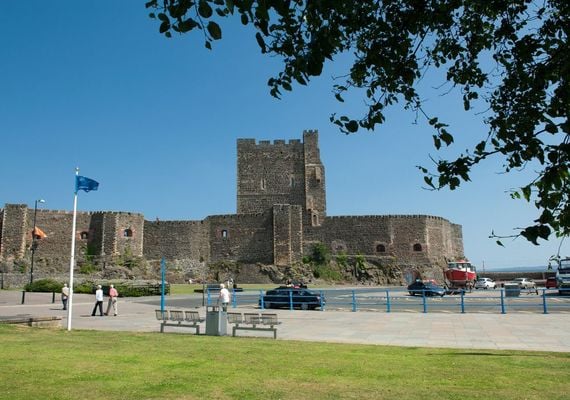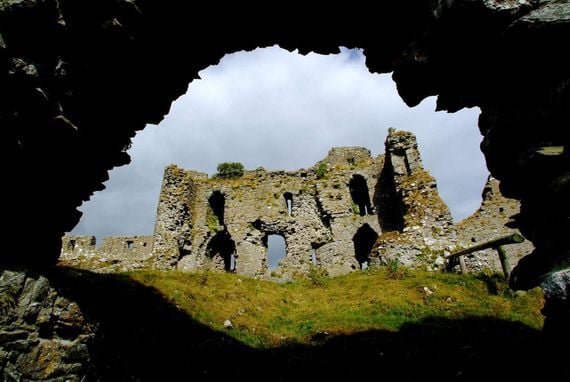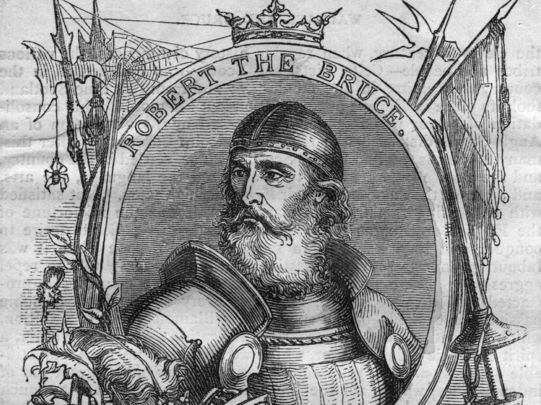On a windswept hill in Faughart, County Louth, overlooking the border town of Dundalk, lies the remains of a Scotsman who crowned himself High King of Ireland.
It was here in on October 14, 1318, that this Scotsman met his end at the point of a sword, the Scots name was Edward de Bruce, brother of Robert de Bruce, the man who famously defeated the English in the battle of Bannockburn.
The remarkable story of how Edward de Bruce was crowned High King of Ireland is a story that illustrates the deep bonds between Scotland and Ireland, bonds that have been made in blood. Both countries have had a long history of struggle against a ruthless Anglo-Norman enemy determined to control every last blade of grass in Britain and Ireland. Both countries' original names were greater Scotia and lesser Scotia-Greater Scotia meaning Ireland and lesser Scotia meaning Scotland. So, it was in the midst of this that the stage was set for an epic series of battles that would set the course of Irish history to this very day.
After his victory at Bannockburn the great leader Robert de Bruce felt that he should open up a second front against his English enemy and what better place than Ireland the home of his Celtic cousins? So, on May 26, 1315, Edward de Bruce landed on the shores of Larne with a huge army determined to overthrow English rule of Ireland.
He immediately joined up in alliance with the powerful Ulster Chieftain Domhnall O Neill and set his sights on laying siege to Carrickfergus Castle but the castle’s impregnable fortifications meant that the Celtic alliance would have to look elsewhere in their quest for English blood.

Carrickfergus Castle.
De Bruce then turned his wrath towards an area of north Louth, which was ruled with an iron fist by Verdun family. The Verduns were holed up inside Roche Castle, a formidable-looking castle perched on top of a rocky outcrop.
Bruce took one look at the Castle and decided that it would be virtually impossible to capture. Instead, the wily Scot turned his attention to the nearby town of Dundalk which he proceeded to burn to the ground. This strategy undermined the Verduns as it demonstrated that they could no longer protect the local population who they were extorting money from.

Roche Castle.
The Anglo-Normans horrified that their protection racket in Ireland was coming under threat began to organize a massive army in response under the command of Richard De Burg who was tasked with putting an end to the Scottish-led rebellion. But unfortunately for the Anglo-Normans De Burgs forces where routed by de Bruce at the battle of Connor. And when the Normans suffered a further defeat at the Battle of Kells Edward de Bruce's forces looked unstoppable but then a foe came that de Bruce couldn’t defeat- the weather and famine. This led to the Scottish forces pillaging of the locals and had the effect of turning many of the Irish against his forces.
So, at Faughart Co Louth on October 14, 1318, the weakened and depleted Scottish Army faced John de Bermingham's force of 20,000. De Bruce was advised by his Irish allies that it would be prudent to withdraw his forces and wait for reinforcements but instead of retreating Edward decided to meet de Bermingham's forces head-on in a full-scale assault.

Love Irish history? Share your favorite stories with other history buffs in the IrishCentral History Facebook group.
Predictably, the battle was a disaster for the outnumbered Scottish-Irish alliance and ended with the death of Bruce himself. A knight by the name of Sir John Maupas cut Bruce down and ended his short but dramatic reign as High King of Ireland. The King was then beheaded, and his arms and legs were cut off and sent to the four corners of Ireland as a warning to any other Irish who may have been thinking of rebelling against their English overlords. And so, ended the reign of Ireland's Scottish High King.
*Seamus Hanratty is a content writer and published author of the viral book The Culchie Dictionary- he specializes in SEO, Digital Marketing, and increasing traffic for websites.
You can read more from Seamus Hanratty at www.secretireland.ie/secretireland and contentwriterireland.ie.




Comments